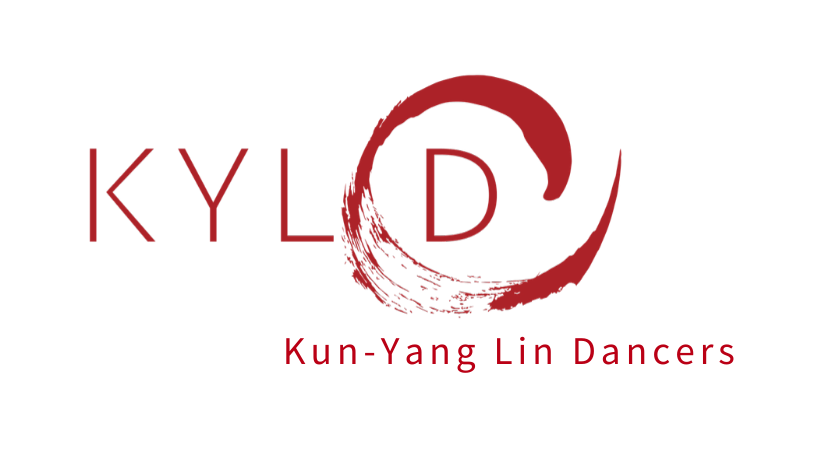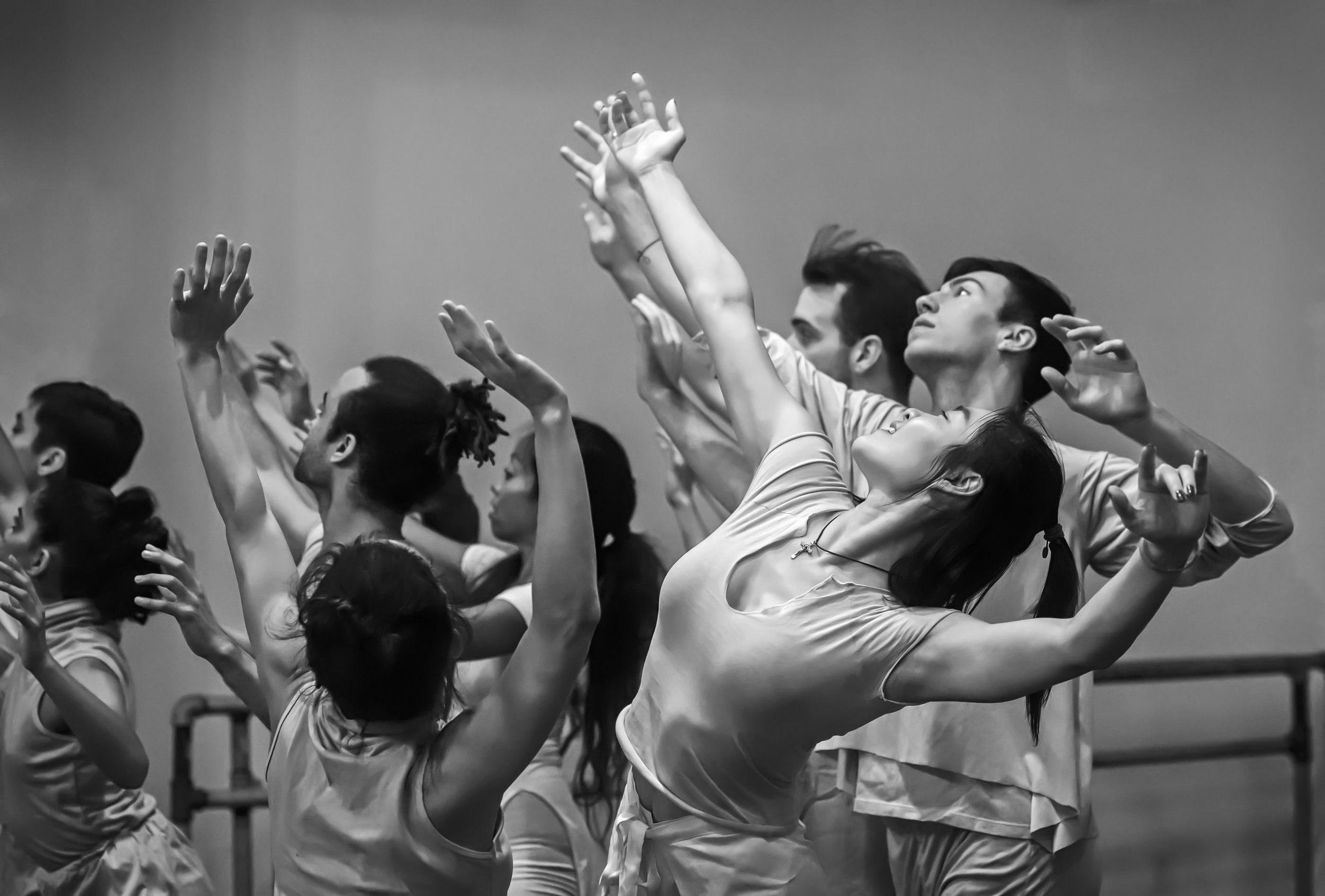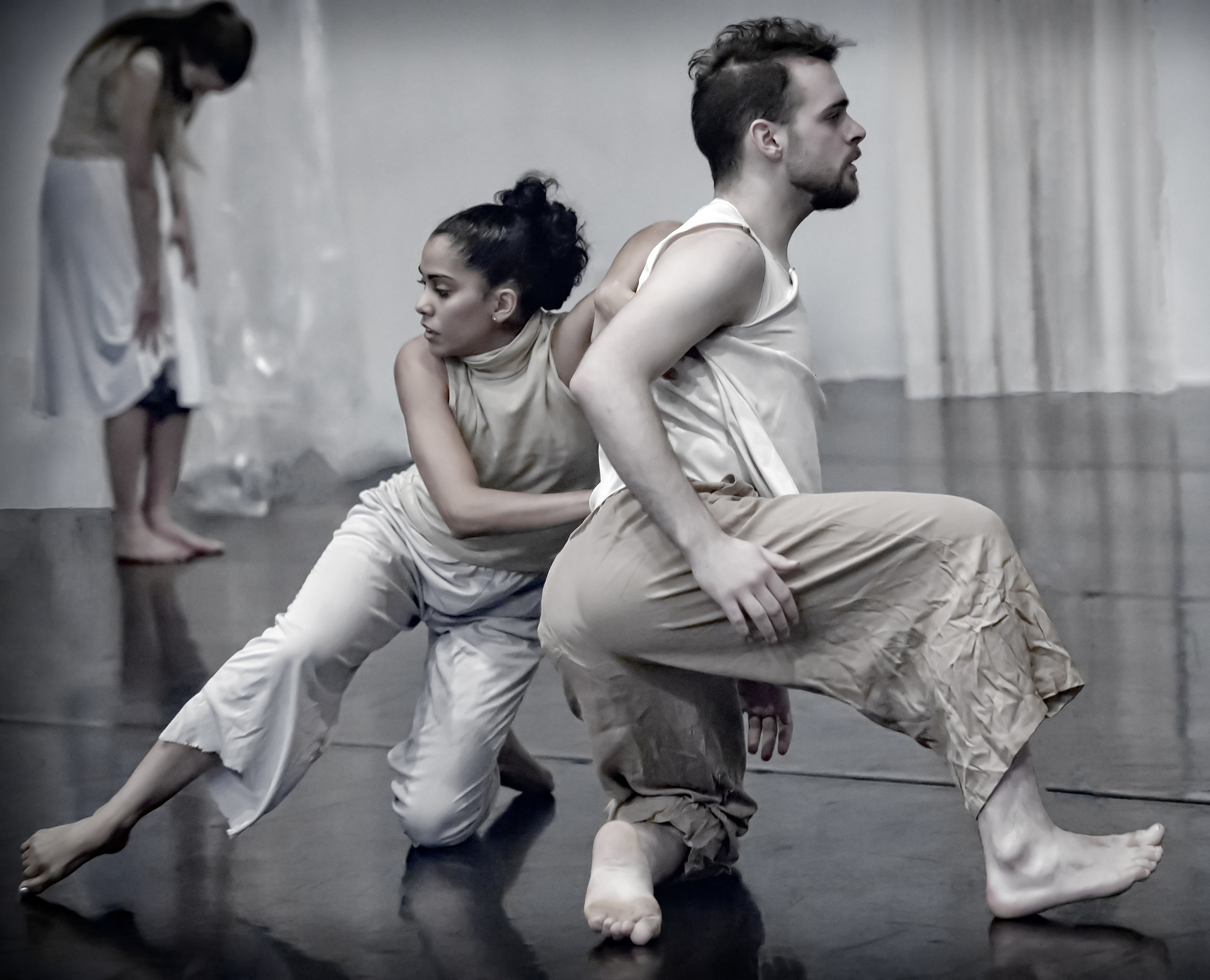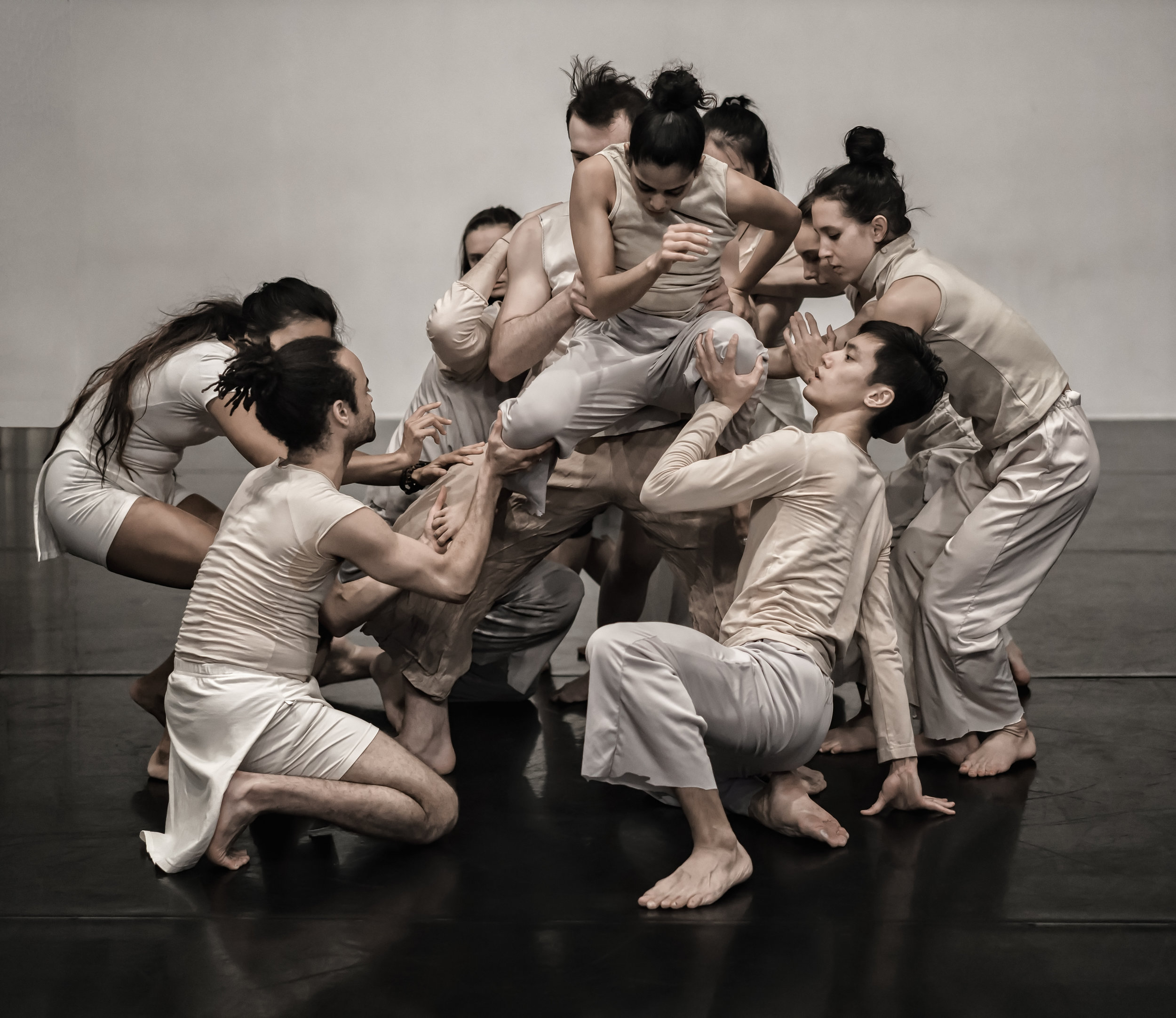Through the process of Faith Project/THE DOOR, the Philadelphia community has a unique opportunity to go behind the scenes with the dance artists and creative collaborators through the Story Circles and The Open Studio Series. This provides a rich dialogue between the artists and audience and, in essence, invites the audience to also become collaborators.
This past week, KYL/D hosted the fourth and final Story Circle and the first Open Studio Series. At both, the dancers performed excerpts with music and in silence. The “audience” had the rare opportunity to see elements of the work several times and engage in conversation about the experience.
During the Story Circle, Kimerer asked the audience of community participants, “What did you see? What struck you? What did you notice?” She reflected that because we saw the work, discussed the work, and then saw it again informed by the observations of other audience members, we not only had a individual experiences, but also engaged in a collective experience. The exchange informed the way we viewed the work and inspired more questions and discourse.
Similarly, The Open Studio Series allows audience members to dialogue with the work and the artists involved, and address their (the audiences’ and the dancers’) questions about contemporary dance, faith, and the lens through which we/they experience the world. The first Open Studio examined bodily movements informed by faith practices and beliefs, contemporary dance practices, and the way gesture informs our everyday life.
The space is dark. One individual walks into the center of the space and stops, looks up. Another dancer enters from the opposite side. I cannot tell the identity or gender of the dancers but they are different sizes and shapes. They seem to be isolated from each other and on individual journeys. A third dancer enters the space. She turns and acknowledges the audience, inviting me to enter into her world. I am transformed – no longer a passive observer but now engaged as a witness and participant.
As the stage lights brighten, I see that the ensemble is comprised of many different types of individuals – taller, shorter, browner-skinned, lighter- skinned, some more lithe, some muscular. The dancers reflect the diversity of the audience with whom I’m sitting. On the surface we’re different, but we’re going through this experience together.
In opening the Studio Series, Executive Director Ken Metzner asked if dialoguing about dance and religion could provide us with insight into contemporary culture. My mind swirls with #MeToo, #TimesUp, the recent mass shootings, and current political and social unrest. In the Story Circle, Kimerer emphasized that bodily movements matter, “If we choose to extend a hand or turn our eyes away… that matters.” Kun-Yang reiterated this in describing the way he grew up, “My parents didn’t speak the same language, so we communicated through gestures. Dance is the place that allows me to connect with something bigger than myself.”
Each dancer pounds the floor with a clenched fist. Slaps the floor with an open palm. Thrusts their head forward and back. Circles their torso. Crawls on the floor. Kneels. Opens their palms. Brings their hands to their mouth. Breathes in a staccato rhythm. Lowers their torso. Gathers their hands together.
At both the Story Circle and the Open Studio, the dancers join the audience and form a circle to engage in conversation after they perform. One of the Muslim Story Circle participants reflects that she sees herself in the work. A Judeo-Christian woman echoes the feeling. As does a community participant from the Buddhist tradition.
Kimerer and Kun-Yang challenge us, again, to meditate on, and move through, the same questions posed early in this process (each requiring the same one-word response):
What do you most love?
What do you most fear?
What is the source of your greatest strength?
Is it possible to create an abstract work for the stage that reflects the rich diversity of spiritual orientations with which we have been engaging? Dance artist Evalina (Wally) Carbonell reflects, “Maybe it’s not about having the same answers, but asking the same questions.”
Dance artist Nikolai McKenzie describes, that in process, “I’m constantly asking myself the same questions, but I experience micro transformations where the answers sometimes change.”
Kimerer offers,
“One way to think about this journey (in dance, in life, and in Faith Project/THE DOOR) is learning about which patterns of movement you need to make your life align with the source of the answers to those questions. Life is inherently improvisational…. Dance, alone among the arts, is a human body moving in space. And as humans, we cannot NOT move ourselves by responding viscerally. There’s a way that dance communicates participation in what the performers are doing… there’s a certain sense in which we are being invited to move as bodily selves in ways that make us more aware…”
Dear readers, I am interested in your answers -- what ONE WORD responds to each of these three questions?
What do you most love?
What do you most fear?
What is the source of your greatest strength?
AND I’m also interested in the space between the asking of the question and the answers. Perhaps it’s in this threshold where contemporary dance, religion, and contemporary culture meet and can enact an understanding that each of us is a body, moving, through... a door...a journey...a life.
In addition to the contemporary challenges I mentioned previously, it’s important to acknowledge that technology is very much a part of our culture. To this end, multimedia designer Jared Mezzocchi and sound designer Cory Neale will be sharing their insights and participation in Faith Project/ THE DOOR in upcoming Open Studios. How do they use a medium that seems devoid of the body? Jared reflected that he views the digital element as another character in the space. As it relates to religion, the digital character particularly challenges us to question our relationship to tradition verses rebellion. “We need to find a way to sink our teeth into tradition but find our individuality and newness as a people of today,” he said. And this is yet another question.
Join us next week and bring your own questions!
~ Jessica Warchal-King
NOTE: To make a comment on this blog, you do not need to make an account- just click "Comment(s)" in bottom left hand corner, write your comment in the comment box that appears, click "Post Comment..." then type in your first and last name and click "Comment as Guest")
Major support for the Faith project has been provided by The Pew Center for Arts & Heritage, with additional support from the National Endowment for the Arts.







